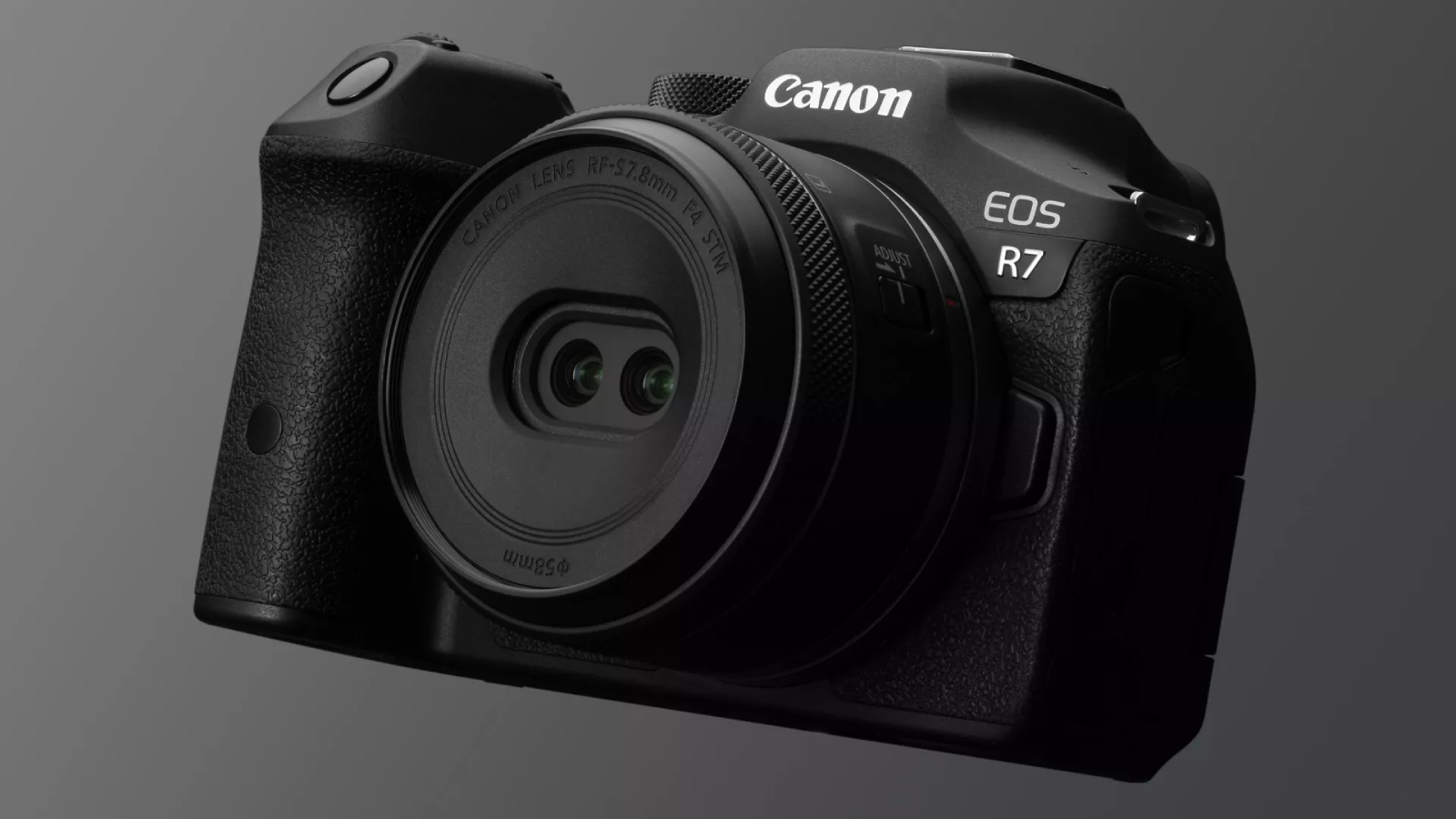Aren't the lenses too close together for proper 3D cinematography? The distance should be about the same as the average distance between our own eyes, I believe.
Is that even far enough apart for there to be enough parallax for a proper stereoscopic view?
Canon's new stereoscopic RF-S7.8mm F4 STM DUAL camera lens for spatial video recording recently became available for pre-order. In the U.S., pricing is set at $449.99, and orders are estimated to be delivered in mid-November.

Apple and Canon announced the lens at WWDC in June. The lens attaches to Canon's EOS R7, enabling the mirrorless camera to record 3D videos for playback on AR/VR headsets like Apple's Vision Pro and Meta's Quest 3. More details about the lens are available on Canon's website, and in our coverage of the WWDC announcement.
After recording spatial videos with the Canon EOS R7 and this lens, Apple said users would be able to edit the videos in Final Cut Pro on the Mac, and upload them to Vimeo. Final Cut Pro will likely be updated with spatial video editing capabilities in mid-November, and Vimeo released a Vision Pro app with spatial video support last month.
Spatial video can also be recorded on both iPhone 15 Pro models and all iPhone 16 models, with no additional hardware required.
Article Link: Canon Now Accepting Orders for Spatial Video Lens Previewed at WWDC
THis is a stereo camera that recorded mv-hevc video. yes, the Apple Vision-Prodevice can play back this kind of video but there are mANY other devices that can. Including the "$8 Google Cardboard" headset.

Geuxe 6 inch DIY 3D VR Virtual Reality Glasses Hardboard for Cardboard
Geuxe Compatible For: 4 / 5, X, Galaxy S3/ S4 / S5, Galaxy (6.0 inches and smaller screen cellphone) Type: DIY Virtual Reality 3D Glasses Material: Cardboard + Resin Lens Note : No NFC(High quality with reasonable price) Package Contents: 1 x cardboard 3d glasses 2 x lens 2 x black magnet ring
www.amazon.com
Yes, it costs eight bucks. It is not quite as good as the $3,500 Apple headset. I have one of these but only made of plastic with better optics. What you do is slide an iPhone in the slot and the software places two images in the screen. The resolution is only half as good as your iPhone but the 3D effect looks decent. An iPhone already has the hardware to do head motion tracking so in theory you could do actual VR.
And then are the other, better devices like the old Optimus headsets. The Canon camera simply cretes mv-hevc files, how you edit them and watch the video is up to you. Viewer prices range from $8 to $3,500 with many price points in between
Some people have said the lenses are too close to do Stereo. But all they need is finer pixes. THe two images need to be different enough to computer stereo disparity. MV-HEVC is not simply two video streams. It is one image plus stereo prediction data. It is a little like the normal interframe production the hevc does.
I think Stereo Disparity can be adjusted computationally to give the effect there filmmaker wants. (but I have no good references on that)
Note that mv-hevc is not limited to only two layers. I hope some day they will make true 6 degree video using MANY layers taken from many points of view.
The required distance between the lens depend on two things:
1) the size of the pixels and,
2) the range of shooting distances you want.
Even human stereo vision is subject to the above rules. With out eye resolution and eye to eye distance we are "stunned" is see stereo from the distance of our hands to about 8 or 10 meters away. After that we judge distance be other means
All you need is for the two images to be enough apart so that the two images are different, with very small pixels the images don't need to be so different
As an Amazon Associate, MacRumors earns a commission from qualifying purchases made through links in this post.


